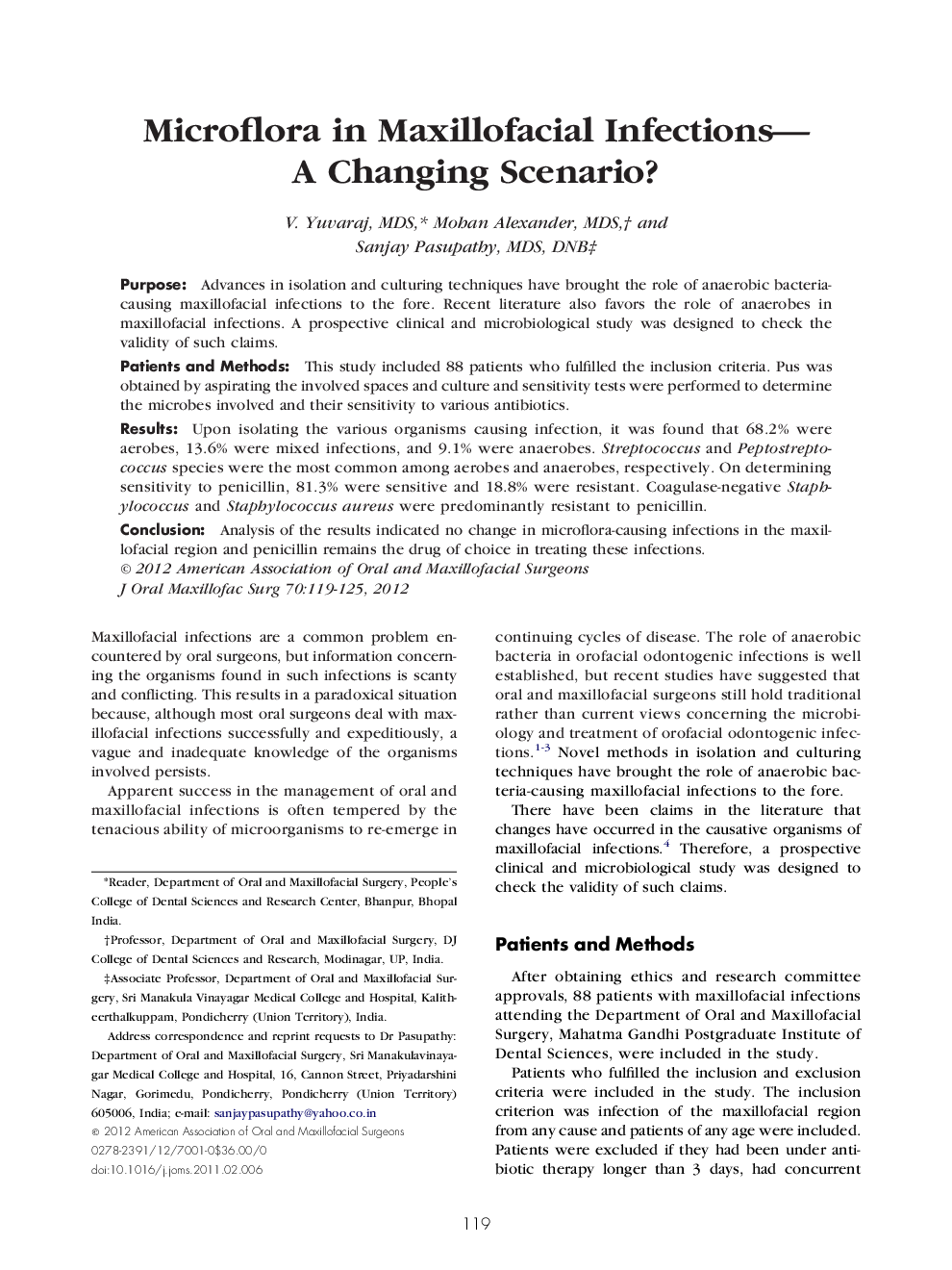| Article ID | Journal | Published Year | Pages | File Type |
|---|---|---|---|---|
| 3156729 | Journal of Oral and Maxillofacial Surgery | 2012 | 7 Pages |
PurposeAdvances in isolation and culturing techniques have brought the role of anaerobic bacteria-causing maxillofacial infections to the fore. Recent literature also favors the role of anaerobes in maxillofacial infections. A prospective clinical and microbiological study was designed to check the validity of such claims.Patients and MethodsThis study included 88 patients who fulfilled the inclusion criteria. Pus was obtained by aspirating the involved spaces and culture and sensitivity tests were performed to determine the microbes involved and their sensitivity to various antibiotics.ResultsUpon isolating the various organisms causing infection, it was found that 68.2% were aerobes, 13.6% were mixed infections, and 9.1% were anaerobes. Streptococcus and Peptostreptococcus species were the most common among aerobes and anaerobes, respectively. On determining sensitivity to penicillin, 81.3% were sensitive and 18.8% were resistant. Coagulase-negative Staphylococcus and Staphylococcus aureus were predominantly resistant to penicillin.ConclusionAnalysis of the results indicated no change in microflora-causing infections in the maxillofacial region and penicillin remains the drug of choice in treating these infections.
